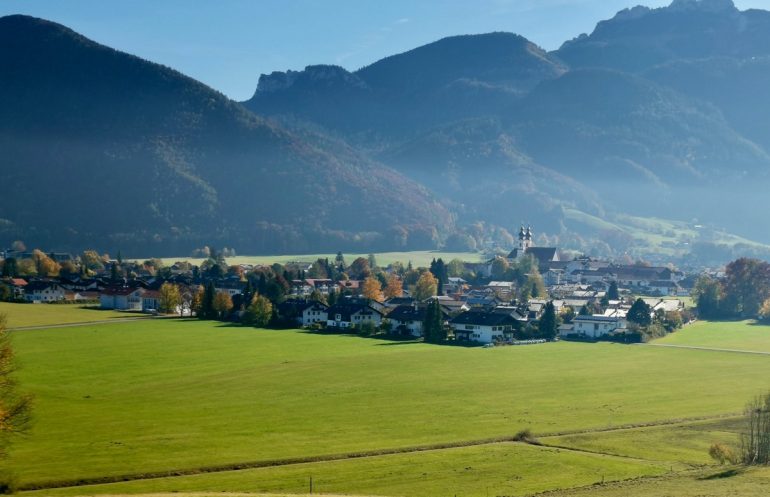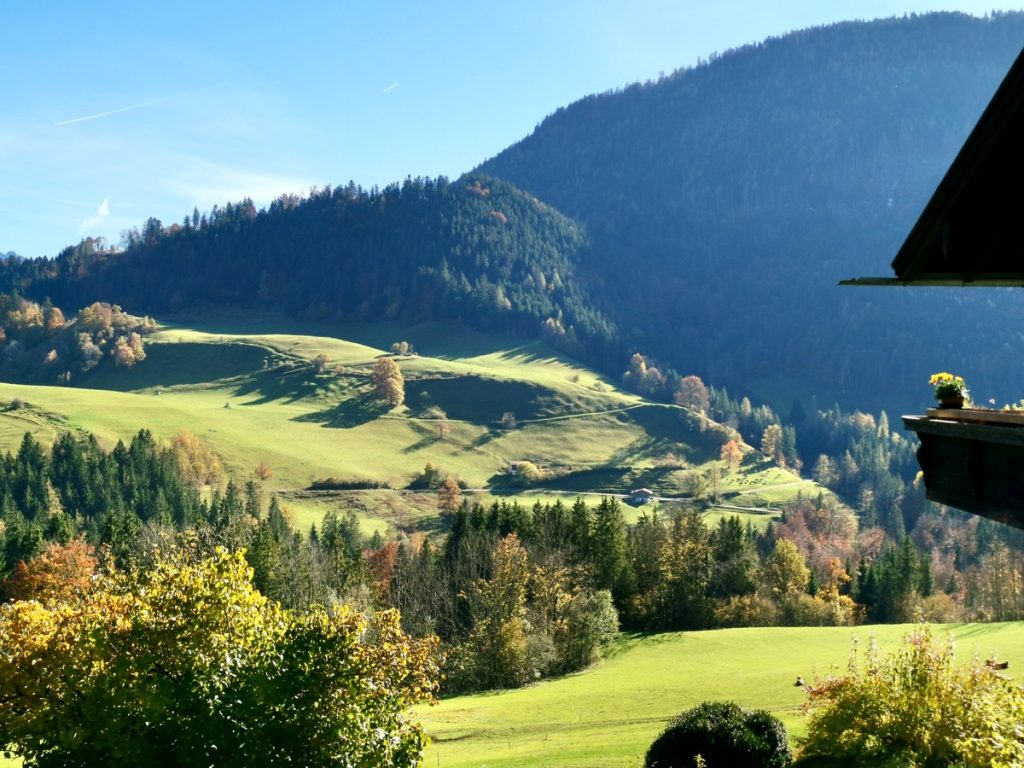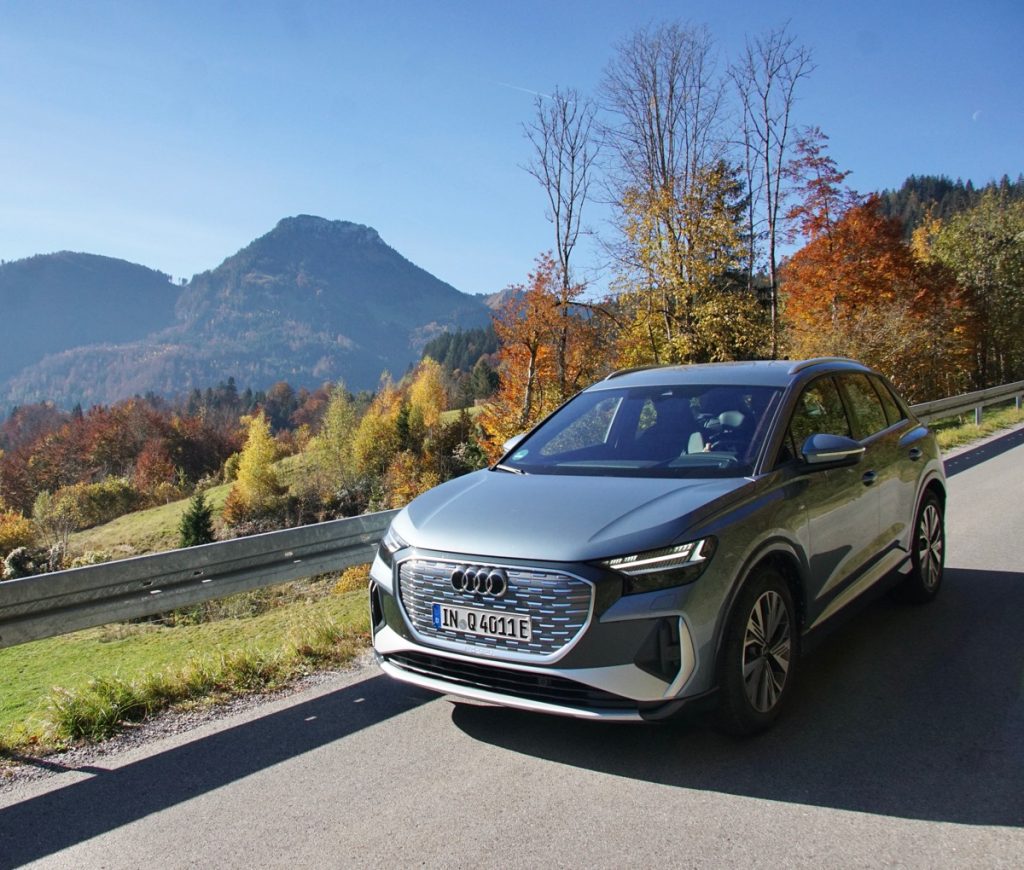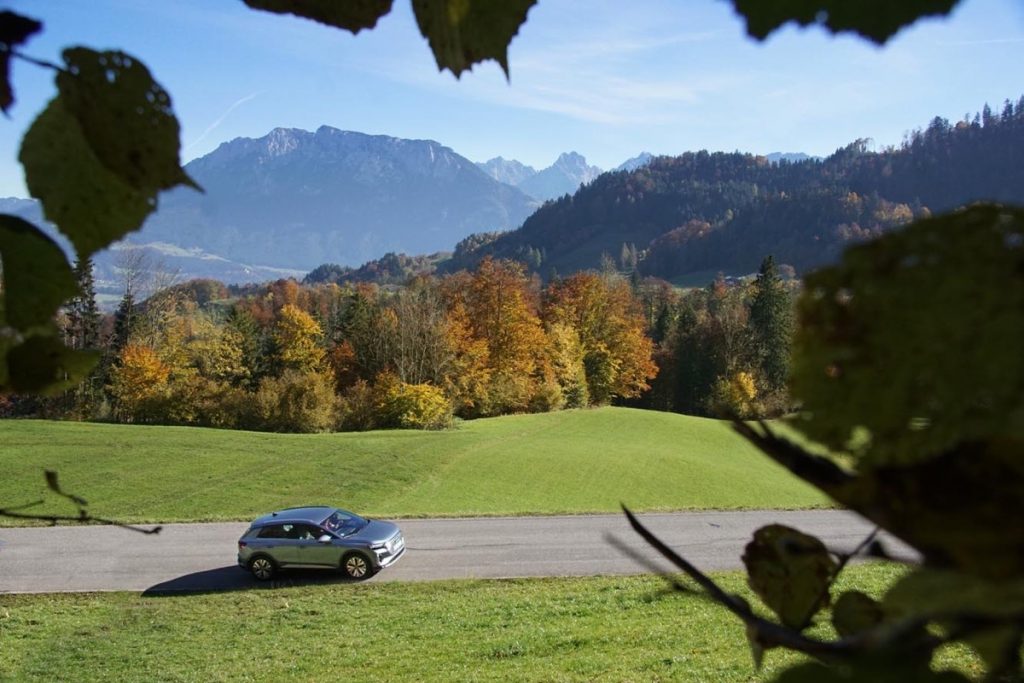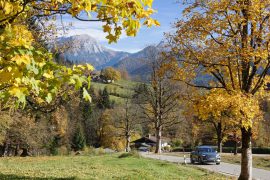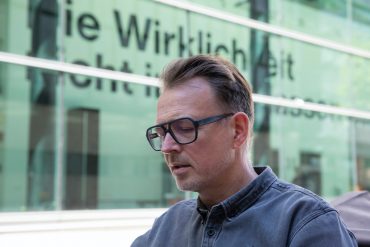Today begins with a working breakfast, but in the cosy atmosphere of the elegantly furnished and sun-drenched breakfast room of the Residenz. Herbert Reiter, head of the tourist information office in Aschau, accompanied by his assistant, has joined us at the breakfast table.
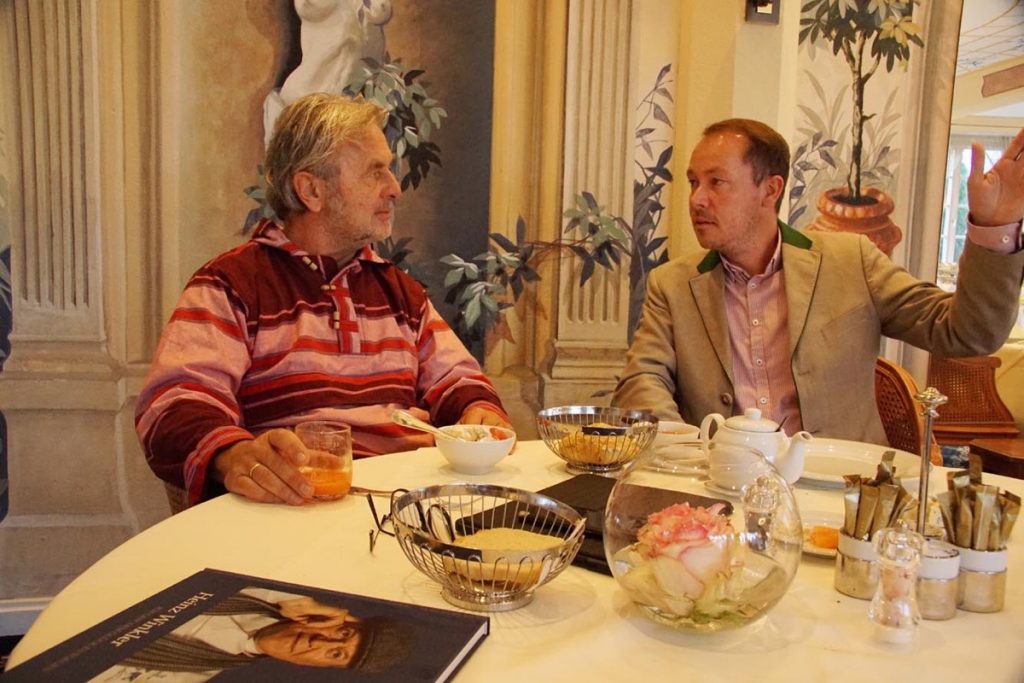
Gentle and close to nature – the Aschau sustainability profile
We’ll get straight to the topic of sustainability and mobility in and around Aschau. Mr Reiter is, of course, very well informed. When it comes to sustainability, Aschau can show a special profile, as Mr Reiter explains to me.
There is a climate protection manager who is also responsible for energy, and e-mobility is also an important topic. There are already plans to use an autonomous bus between Aschau in the 15 km long valley to the mountaineering village of Sachrang. There is already a partnership with Werfenweng, the e-mobility pioneer in the province of Salzburg.
In general, the focus is on nature-based and gentle tourism, not on event scenarios. The local and regional treasures are used, they are rethought and with a little “brain power” they can be presented in a contemporary way. This brings us to a special attraction in Aschau.
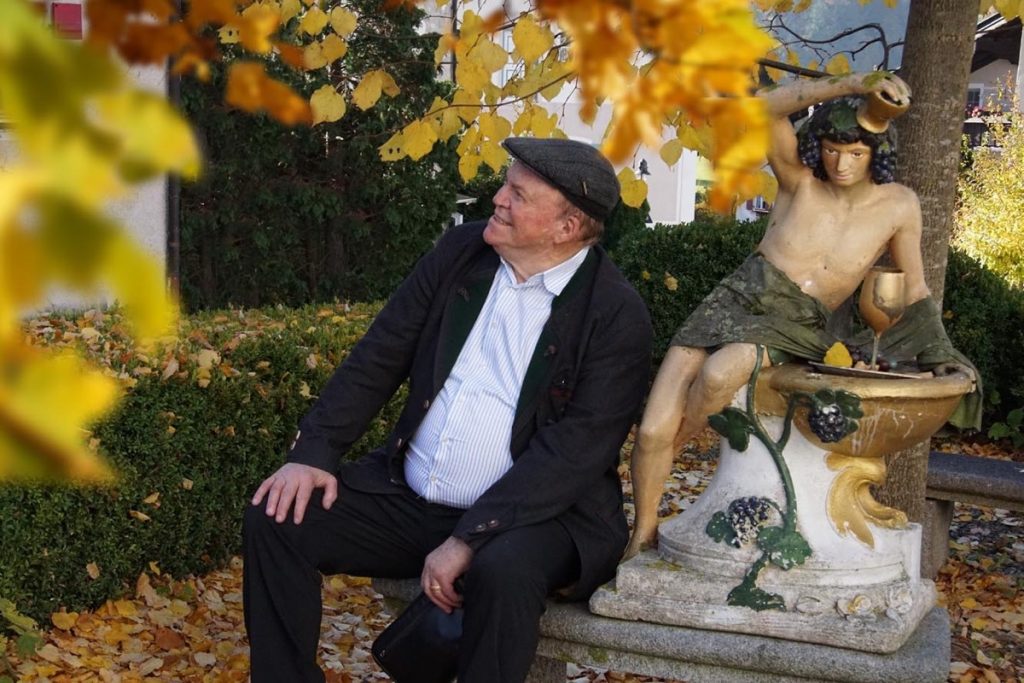
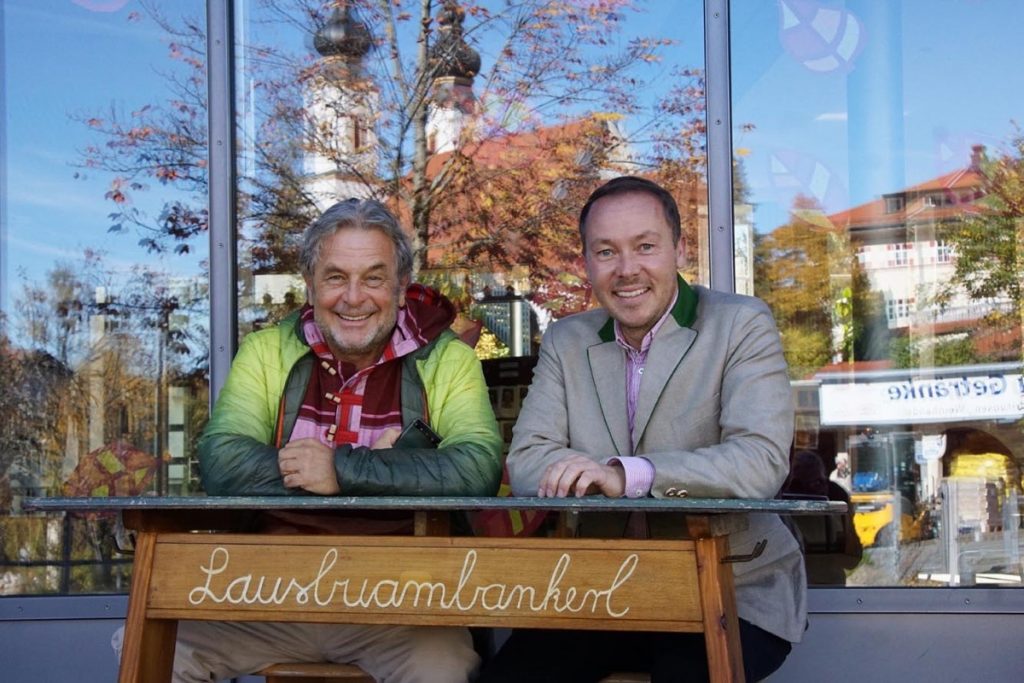
Unique “banker’s” density
Mr. Reiter can also call himself the inventor of the “Aschauer Bankerl”. Originally, he simply wanted to offer visitors to his village enough benches to linger and slow down. Over the years, 470 benches were created, which is a certified world record for the density of benches. But that is not all. 200 of them are specially designed as themed benches, donated by citizens and businesses, and offer an almost unbelievable variety of ideas for what can be made out of a normal seat. They are, so to speak, the benches of citizenship, of community spirit. But these thematic places to sit are limited to 200. There are, for example, the heavenly cradle, the ski bench, the pensioners’ bench, the death-and-death bench or the rascals’ bench and many more pieces of furniture with character. The benches make Aschau unbelievably colourful and individual and encourage you to pause and contemplate your surroundings. In addition to the “Bankerl-Wesen”, there is also an Aschau tour, the Aschau Genuss-Tour. An ingenious overall concept that inspires imitation. From my point of view, the Bavarian Tourism Award for this very special approach was therefore “a gmahde Wiesn” (“a surefire thing”).
I will have to make up for the Aschauer Genuss Tour, the visit to today’s market day, where only seasonal products are available, and the visit to the castle. Heinz Winkler is already waiting for us in the sunny pavilion of his residence.
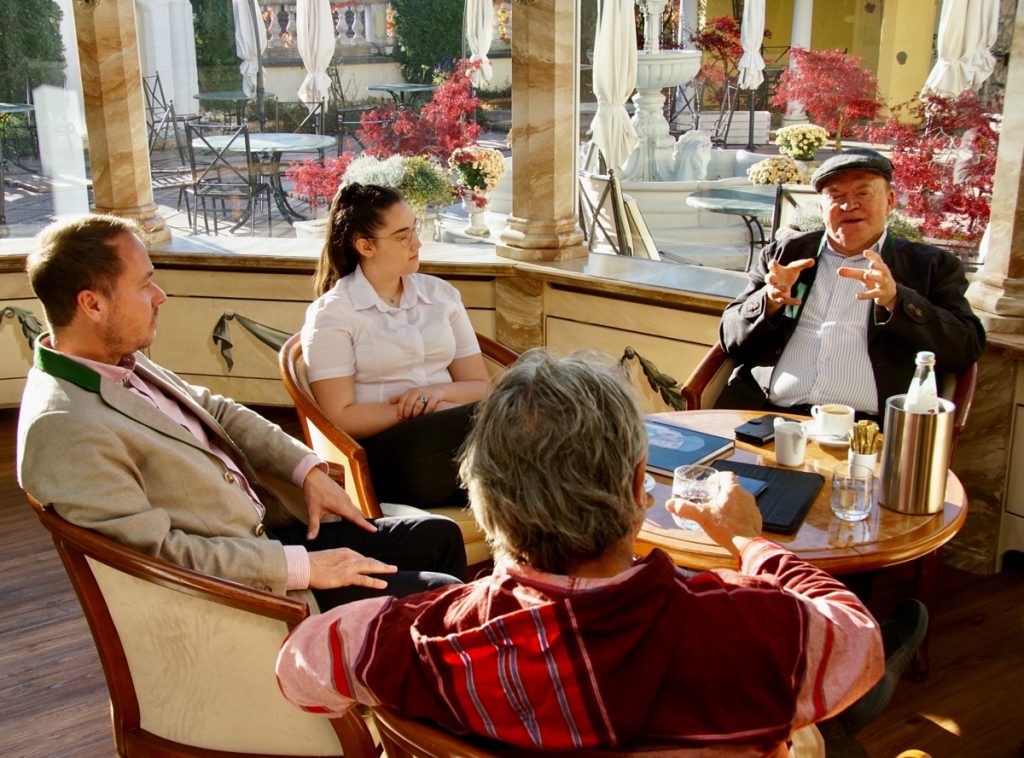
Die Kampenwand – erschlossen mit moderner Technik
Having arrived, the tourism boss reports on yesterday’s inauguration of a pipeline system that is unique in the Alpine region. The 1,669-metre-high Kampenwand is now the first mountain on which twelve mountain huts are connected to the network of the municipality of Aschau by a system with drinking water, waste water and electricity. In future, a fibre optic cable will also make internet possible at 1,400 metres.
With celebrity chef Heinz Winkler, we then discuss e-mobility and sustainability, local heat supply, charging stations for e-cars and the Bürger-Mobil project in the municipality of 6,000 people in an extended round for another half hour.
After a warm farewell from Heinz Winkler and his family and the great experience of the unique five-star accommodation accompanied by a three-star menu from the Maestro, I make another short detour to a special vantage point of Aschau and the Chiemgau character mountain. I soon reach my destination on a narrow dirt road, only the soft tinkling of the bells on the collars of the four young cattle on the mountain meadow can be heard, and so I immerse myself in the view of the village and the mountain for a few minutes. This is how it has to be, this is how it can stay.
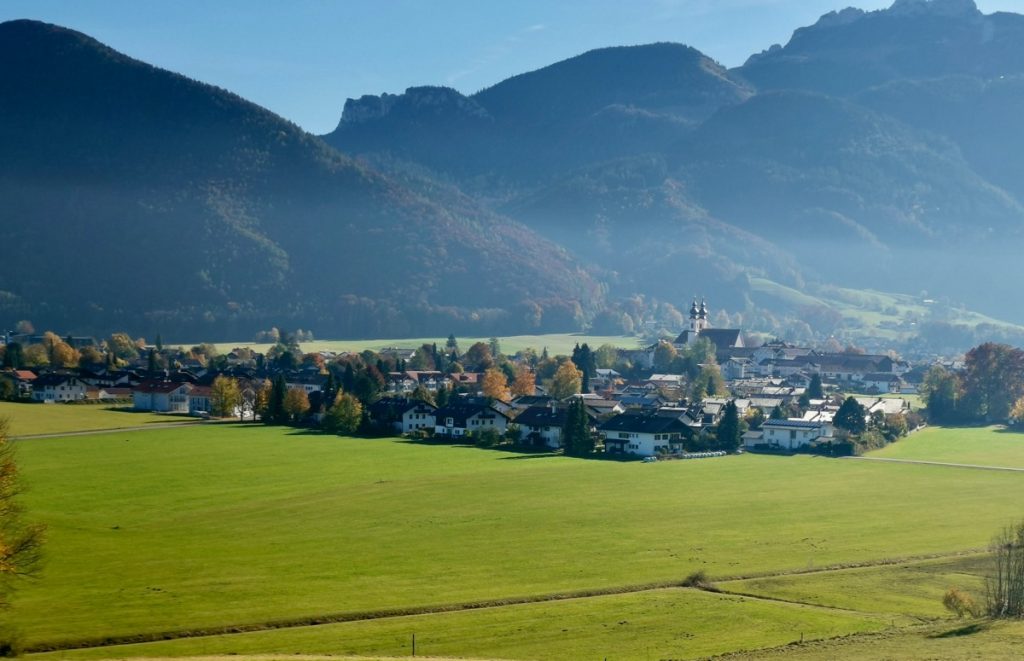
Vom Bayrischen Meer wieder bergwärts
But the tour on the German Alpine Road will continue. The dream weather beckons me to other destinations and my next appointments on the route are already fixed. So I follow the asphalt ribbon on its next advance out into the Alpine foothills, which is to take me to Bernau am Chiemsee. As if remembering that there are no Alps right next to the “Bavarian Sea”, the road swings south and uphill again. Behind Unterwössen, the German Alpine Road lives up to its name again and remains so until its end in Berchtesgaden.
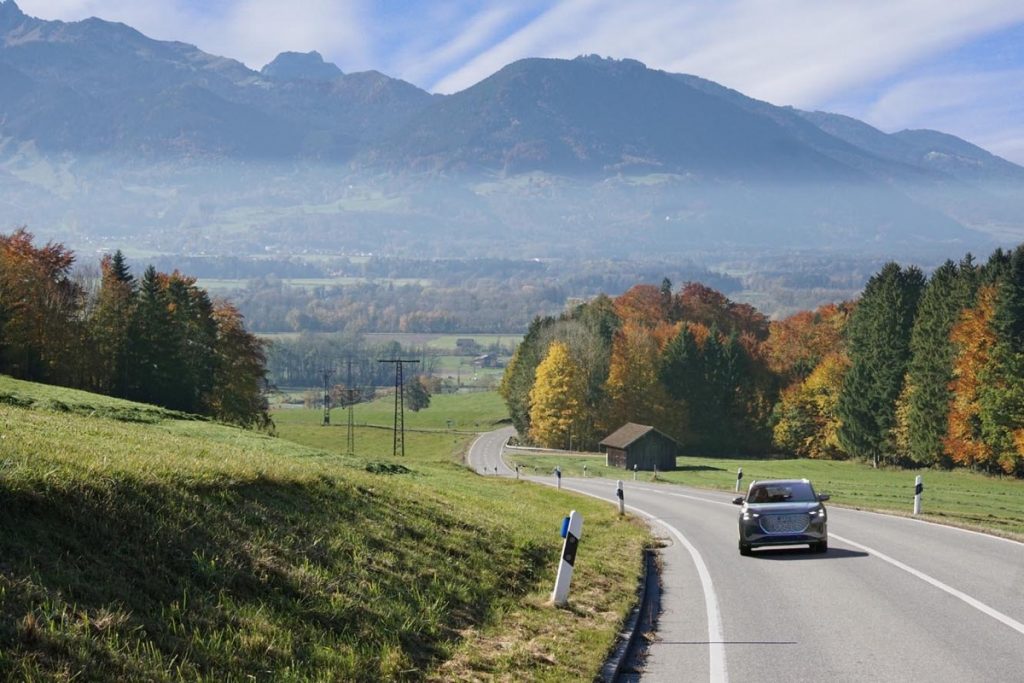
It shows its good intentions right away at the Maserer Pass south of Unterwössen, which is not 800 metres high, but again offers some curves and even a real hairpin bend.
Gut Steinbach – Sustainable and regional products at the highest level
Then Reit im Winkl is reached, which has its name quite rightly, because as if in the furthest corner of the mountains, it is framed by foothills of the Kaiser Mountains and the Chiemgau Alps. The “Winkl” also somehow manages to hold on to the snow, because Reit is considered one of the German ski resorts with the most reliable snow.
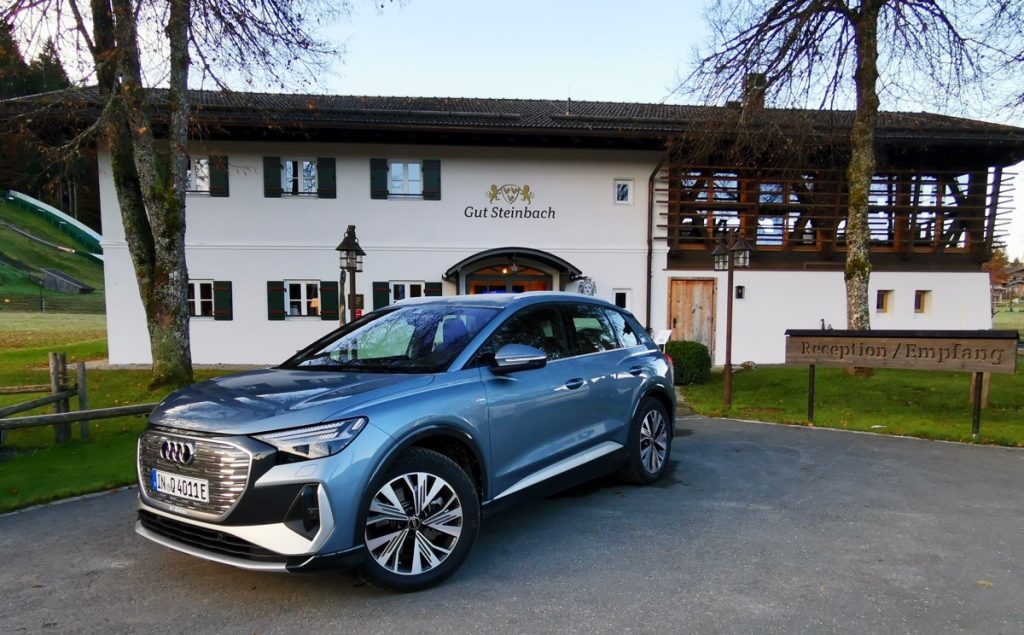
The bulbous onion tower, beautiful alpine houses and Lüftl paintings on the walls make the community a very picturesque Bavarian village. Since the Bavarian King Maximilian II visited it in 1858, the hidden village became really hip among nobles, the rich and artists. Maximilian, the father of fairytale king Ludwig II, was a great nature lover and undertook an extensive journey from Lake Constance through the Bavarian Alps to Berchtesgaden. In fact, this journey, which at that time was still rather complicatedly concocted with hiking and carriage rides, was the starting point for the idea of the German Alpine Road.
So if Maximilian descended royally in Reit im Winkl, then just 164 years later I want to do the same, more bourgeoisly, but at a high level. Which can be arranged quickly, because at Gut Steinbach Hotel & Chalets, quietly located on a plateau a little outside Reit im Winkel, you can truly indulge yourself like royalty. Perhaps also because the estate, which has been owned by the family of a real countess and count since 2010. Countess Susanne and Count Klaus von Moltke have already received several awards for their hospitality services, and chef Achim Hack has been awarded the Guide Michelin’s Green Star. King Maximilian would be amazed at all the things that have happened in his little mountain village, both entrepreneurially and sustainably in terms of cuisine!
In the evening, I have the honour of dining with the owner family. In the relaxed atmosphere and stylish ambience of the Tiroler Stubn, we quickly get to the topic of sustainability, to which the Count and Countess have seriously and consistently committed themselves.
We use the time until the start of the dinner to talk about regional products for food and drink, e-mobility and charging infrastructure and, above all, about the sustainability concept for the estate and the hotel challets, as we did with Heinz Winkler.
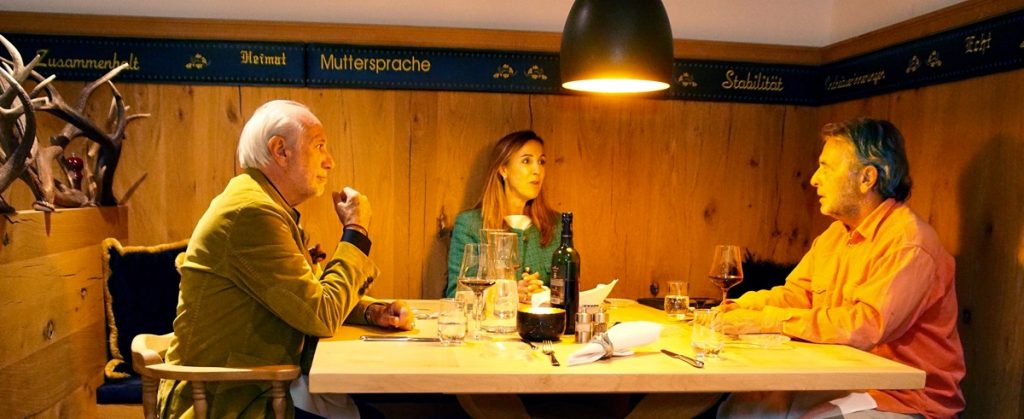
Two triads characterise the headline of our own sustainability report: Ecological, Social, Economic and Home, Peace, Soil. These headings include regionality and e-mobility, cooperation with local craftsmen and the processing of exclusively natural raw materials. The concept goes so far that, for example, pond liners were not used for the natural pond, instead natural clay, loam and granite fill were used and, of course, local botany was given priority in the planting.
The Countess also brings in that she benefits from the biomass heating power plant in Reit im Winkel, which guarantees a 100 percent regenerative heat supply at Gut Steinbach. E-golf carts are also on the road on the grounds for transporting guests and materials. The charging infrastructure, which currently has six charging points for electric vehicles, is to be expanded. Thanks to the cooperation with the local bicycle shops, there is always an appropriate stock of bikes for guests and excursions, and chef Achim Hack comes to his place of work on his racing bike as often as he can. Countess von Moltke explains how she summarises the entire scenario of sustainable activity at Gut Steinbach in an annual sustainability report. This report was chosen as the Sustainability Concept of the Year 2020 (Busche Verlag/Schlummer Atlas), something to be a little proud of.
And while we start with the first course of the dinner menu, I learn even more about the sustainability approach at star level. For example, 80 per cent of the food at Gut Steinbach is regional and the sources of supply come from a maximum of 80 km away. Fruit, vegetables and herbs come from the estate’s own garden as far as possible, and venison comes from the estate’s own organic-certified farm.
Impressions from Hack’s “80:80” kitchen at Gut Steinbach – you want to be Dahoam, not only on this evening.
The time flew by, the star-level dinner was delicious, and as a farewell, Count von Moltke told me that the hotel was of course well supplied with internet and that the digitalisation of the entire hotel also contributed to using fewer resources, e.g. through digital duty rosters, sensitised reception staff, as well as all processes that could be usefully digitalised, for the benefit of the guests and the staff. I could see much more about this during the evening on my suite. As a bedtime snack, so to speak, the Countess added that she wanted to send me the latest sustainability report in digital form.
With thoughts of tomorrow’s last tour day, a mental résumé of the penultimate tour day and a view of the moonlit pond of the estate, I let day five of my e-tour on the German Alpine Road come to an end.
www.residenz-heinz-winkler.de

